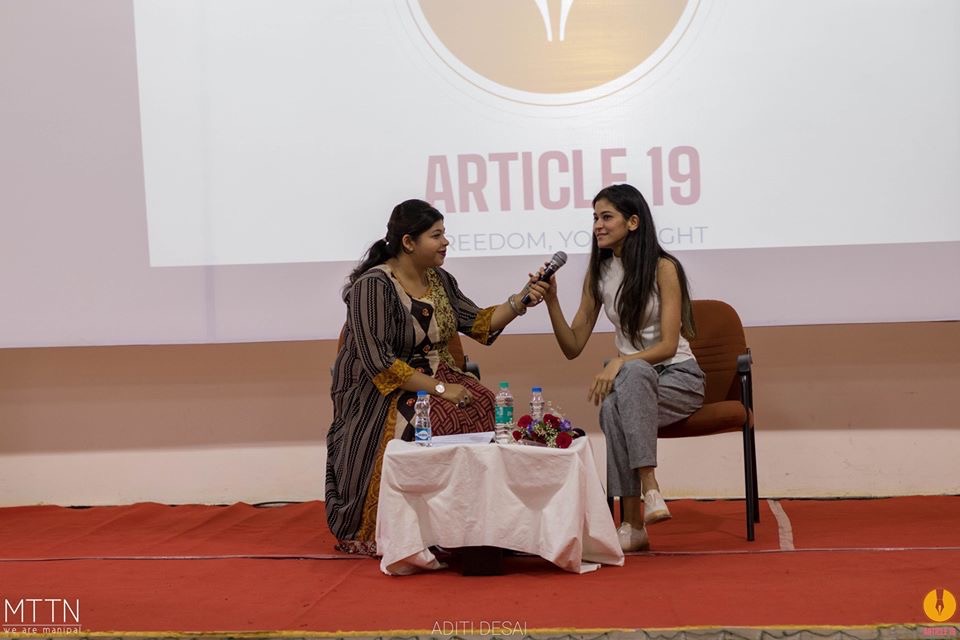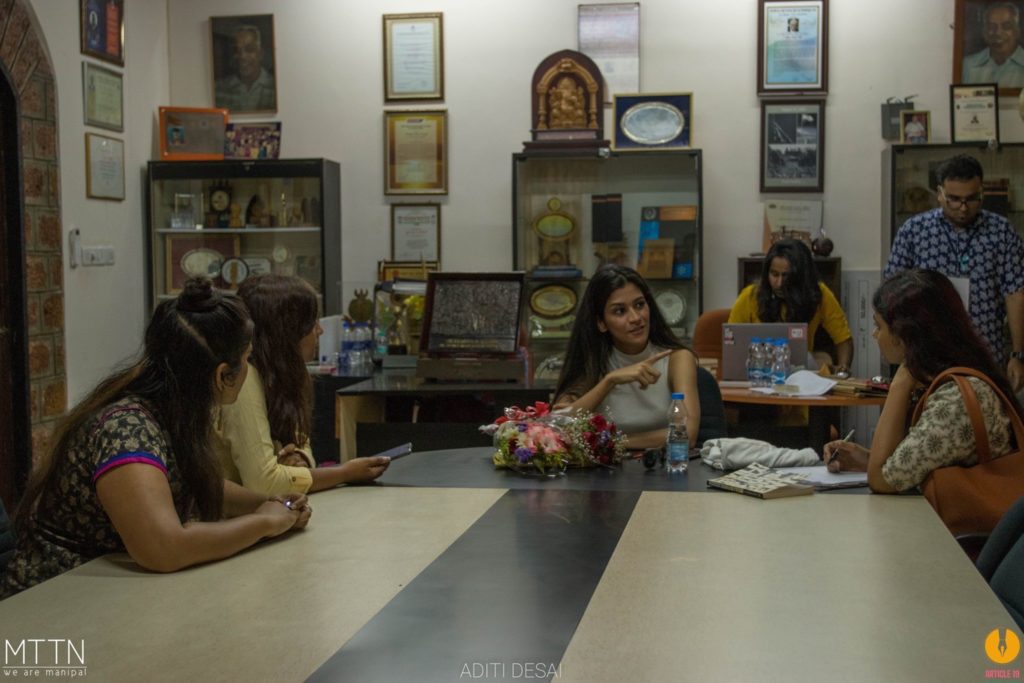
Disha Oberoi, commonly known as RJ Disha, is a radio jockey based in Bangalore’s Red FM 93.5. She wakes up the city of Bangalore with her show ‘Morning No. 1 with Disha’ and has won the “New York Film Festival’s World’s Best Radio Programs Awards” for it in different categories consecutively for 4 years now. The beloved radio personality started out as a flight attendant but decided to change her profession after being complimented on her unique voice constantly and started attending an RJ’ing workshop.
She is well known for her various initiatives such as ‘Don’t Be Horny’ (no horns while driving) and ‘Bread Butter Jam’ (anti-road rage initiative) in cooperation with the Bangalore Police. She also recently worked with the Election Commission to spread awareness on voting and enabled people to come out of the homes and register themselves for voting for which she was awarded the National Award for Media in 2019.
An alumnus of Manipal Institute of Communication, Disha Oberoi recently visited her alma mater as a guest speaker for Day 2 its media event, ‘Article-19’.
Here are some excerpts of Manipal the Talk Network’s interview with her.
MTTN: Is the portrayal of being an RJ on television accurate?
D: Do you mean with the headphones and the chill attitude? Not exactly, but sort of. It’s a very chill job.
MTTN: As someone who has interviewed quite a lot of famous personalities, what is something you have noticed that people don’t like?
D: See, I’ll tell you what they don’t like- they don’t like that there’s no research done. When you go in there and ask them some questions without research, it’s offensive. When you’re inviting a guest, you’re obviously inviting them because you as a journalist, or an RJ, or a newspaper reporter know about them.
The most impressive thing is thorough research where they are like ‘How did you know this? Nobody’s asked me this question before.’ Like you understand their work so much and read their growth and their graph.
There are so many rookie journalists today that they’re giving you an entire narrative. Everyone’s pretty much going to ask the same questions – ‘how does it feel?’, ‘what is the best moment?’, rapid-fire round, ‘biggest challenge’- so they’re answering the same questions everywhere. Can you be a clutter breaker?
Do your research like a boss. What they don’t like is when you don’t do your research and ask them some flipping questions where you’re mixing up the dates or actors or movies, and you’re asking them some real run off the mill questions. They don’t appreciate it. They’ll oblige, but they won’t appreciate it. They really love it when your research is like that of a scholar.
MTTN: How difficult is it to think of original content to put out every day?
D: It is a challenge. That’s why we have a team, that’s a bunch of creative people and then you get used to constantly churning content. So when I’m not working, I’m reading stuff- and you know anything can trigger an idea. So because radio is every day and not like a media magazine that comes out every fifteen days, your content churn is much higher. And it’s normally a three-four hours show, which is quite a bit to fill with interesting content, so that’s why you have a team of creative people who sit together and brainstorm. Sometimes there are days when you have so many ideas that you can’t accommodate it to a four-hour show, so then you start banking the ideas for days when you have a creative block. That also happens, right- when you’re not able to think and you’re not able to write- that’s when you go to your bank where all those extra ideas are saved and then you pool those out for the rainy day. That’s normally how we function. Somedays, you just have one idea after the other, and then you have like 8 ideas but we only need two, what do we do the rest of the six? Put them in the bank.
It’s like an FD, and when you’re out of money, just go break the FD, get the idea and roll it out.
MTTN: You have tried your hand in the radio industry in other parts of the country. How different is it compared to Bangalore?
D: In India, they’re all the same. When you go abroad that’s when you find out that Australian radio works differently, Korean radio works differently, Argentinian radio works differently, Canadian broadcasting- the CBS, a big radio network, they work differently. But in India, channels are pretty much the same. Because you know, the talent pool is so tight in radio, most of the people working for this channel previously worked for them, most of the people working for them previously worked for these guys, so it’s pretty much the same.
I have this habit, every time I go to a different country I tune into the radio just to catch up, and inevitably there’s always an Indian radio channel because Indians are everywhere, so you’ll always have one channel playing desi music. And then you catch them, you can start sampling them but within the country, they’re all pretty much the same.
They’re all like each other – different but not drastically.
MTTN: In an industry that has been overtaken by many other forms of infotainment with both these aids, how hard was it for you to get to the platform you are at today in radio?
D: It was difficult for me. My brother would always say “Radio is for ugly people”, so he congratulated me when I got on the radio.
I said “Dude I got onto the radio!” he said, “Good.” I said “that’s it?” and he said, “Yeah, radio is meant for ugly people. If you looked better, you would have ended up on TV.” So I mean that was the whole ideology before, but now they’ve started putting cameras in and then they want you to be available on digital media – it took a lot out of me.
I enjoy the mystery and the enigma of the radio, where you listen to a voice and you connect to them without knowing what they look like.
But now, it’s so different.
The biggest complaint my bosses have with me is ‘You are not on social media enough’. That’s their single biggest problem with me which I’m trying to work on, which for me is a challenge. I love not being in front of a camera, but now it’s becoming a must. I‘m awful at it.
Interviewed by Tanya Jain for MTTN
Pictures by Aditi Desai for MTTN



Leave a Reply
You must be logged in to post a comment.